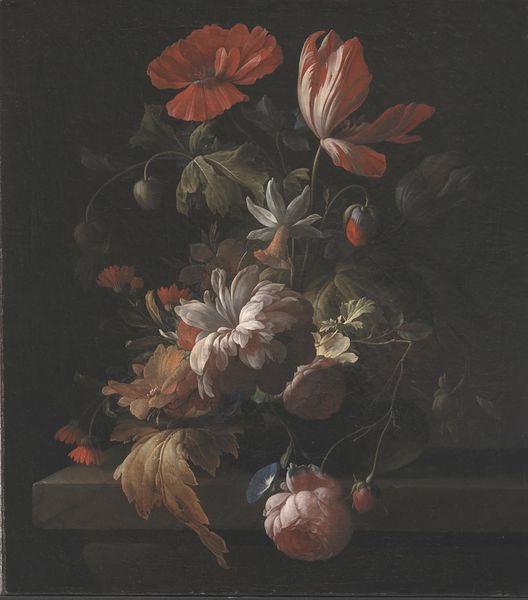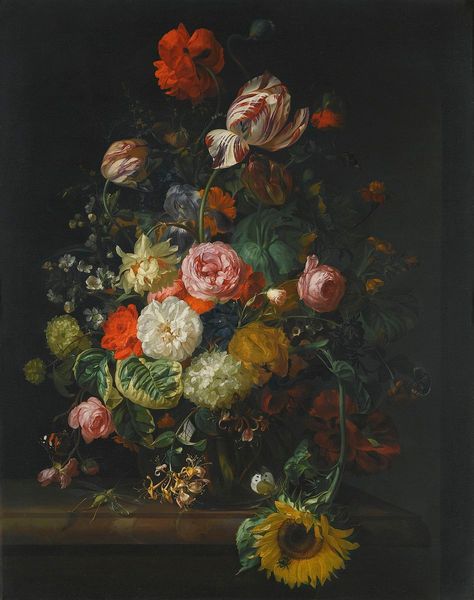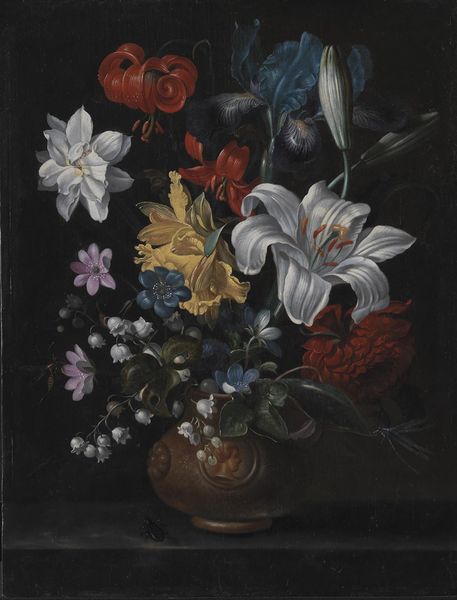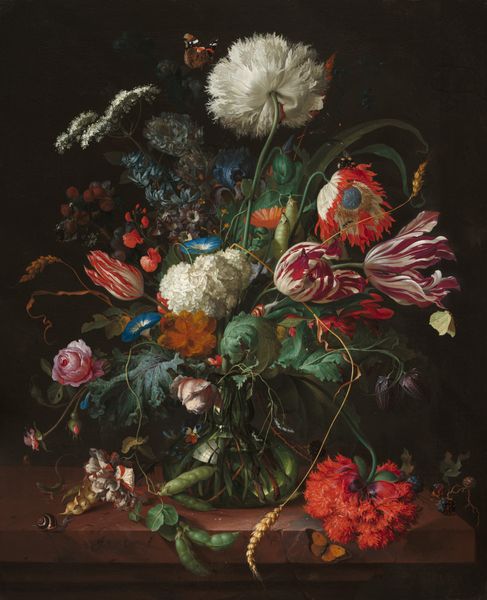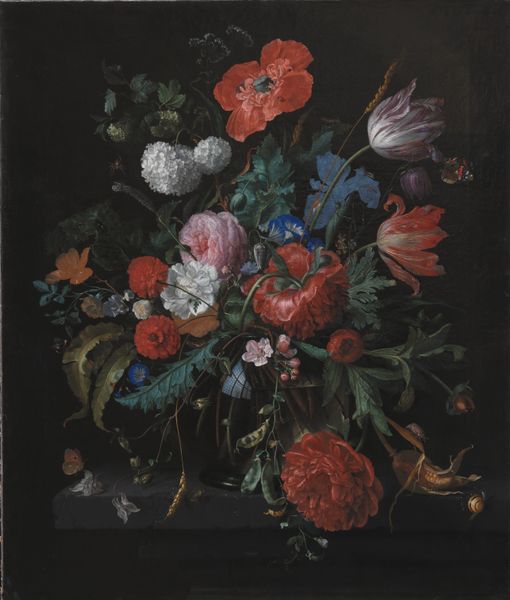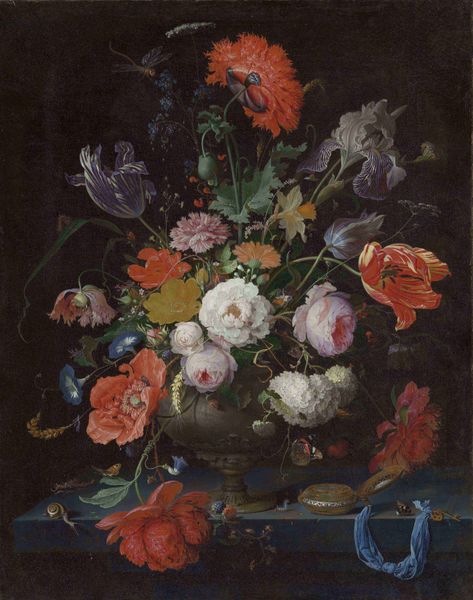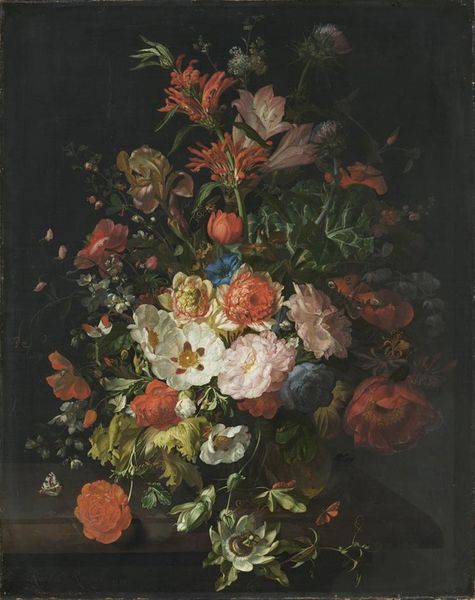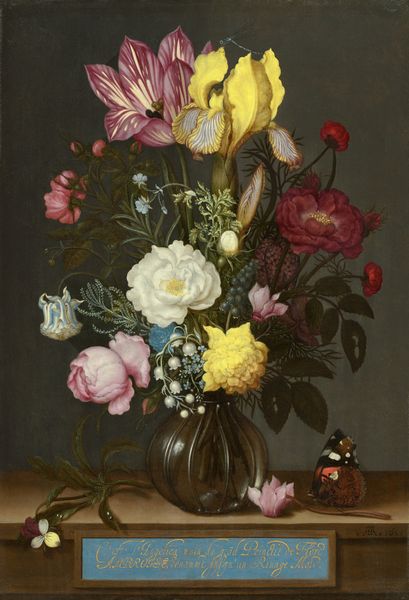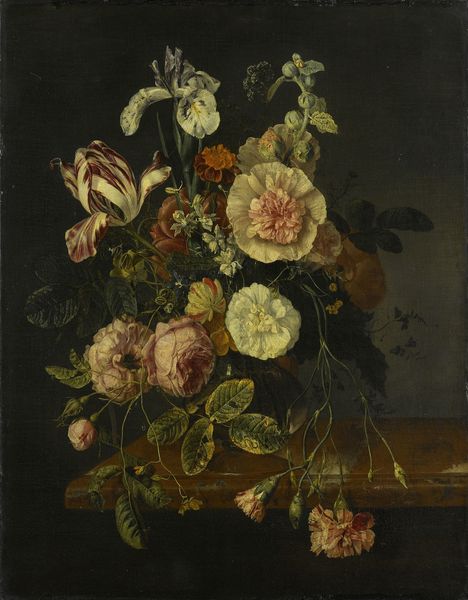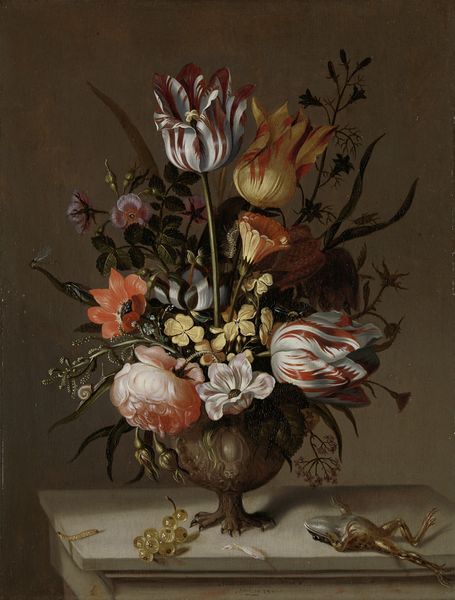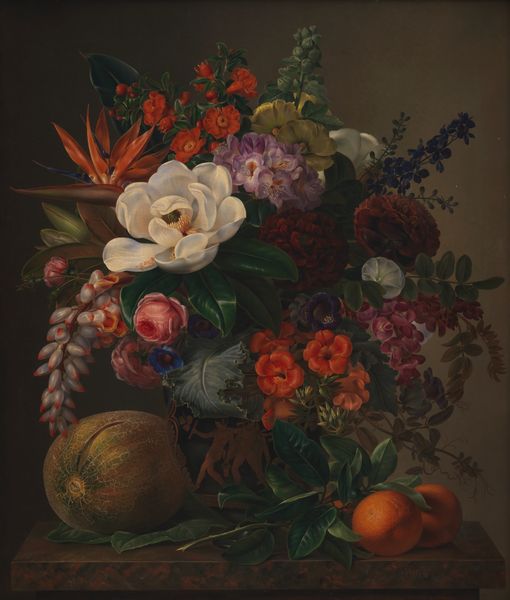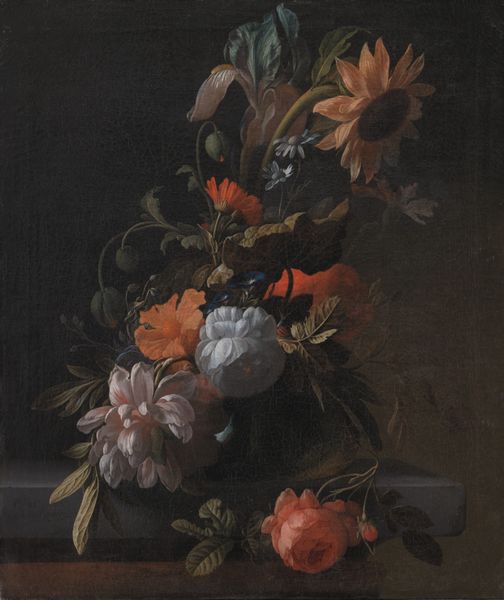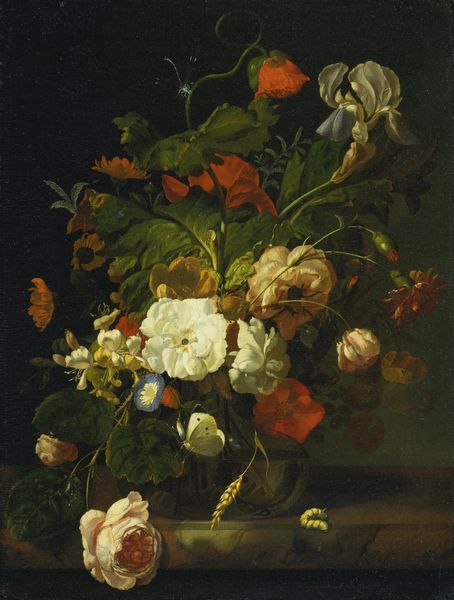
painting, oil-paint
#
baroque
#
painting
#
oil-paint
#
vanitas
#
genre-painting
Dimensions: overall: 67 x 51 cm (26 3/8 x 20 1/16 in.) framed: 85.7 x 68.6 x 10.2 cm (33 3/4 x 27 x 4 in.)
Copyright: National Gallery of Art: CC0 1.0
Curator: Let's delve into Philip van Kouwenbergh's "Flowers in a Vase," an oil painting dating from around 1700. Editor: My first impression is a sort of somber richness, a reminder of beauty fading. It's opulent but muted; those dusky browns lend a bittersweet vibe. Curator: Absolutely. The artwork is a great example of baroque still life and embodies the "vanitas" theme, reflecting the transience of life. It presents this bounty of flowers—roses, tulips—yet there's also this palpable sense of melancholy. Editor: Look at that snail! Talk about symbolism; it's almost comical—a slow-moving counterpoint to the ephemeral beauty bursting from that vase. I bet there is more subtle humor. Like, the artist thought: nature's joke on us! Curator: It's clever to interpret that humor in the overall symbolic language of this work. In the 17th century, floral paintings like this often spoke to societal values, displaying wealth, cultivated taste, and also the recognition of mortality. Editor: You can certainly smell the earth, and see all the beauty of a bygone era of kings and queens that believed art would live forever. Even in its decay there is beauty! The light just spills onto these blooms and it makes my head swim in poetic thoughts... it sings! Curator: Yes, and the patronage of this type of art tells us about who consumed it: affluent citizens eager to display their cultivated appreciation of art. So "Flowers in a Vase," besides the symbolic game, offers a study in class, desire and market. Editor: Looking closer, each petal looks like a different, sad, and happy memory, or each stage of romance—the hopeful bud, the ecstatic bloom, and that lovely surrender back to earth. It is romantic, or the dream of romance at least! Curator: Considering that artwork holds significance and multiple layers, one gets to engage in a dialog between social commentary and artistic expression of the time. Editor: So next time I receive a bouquet, I won’t just enjoy it, I'll ponder mortality, class struggle, and the art market. Cheers to van Kouwenbergh for provoking such heavy thoughts while displaying some very pretty blooms!
Comments
No comments
Be the first to comment and join the conversation on the ultimate creative platform.

